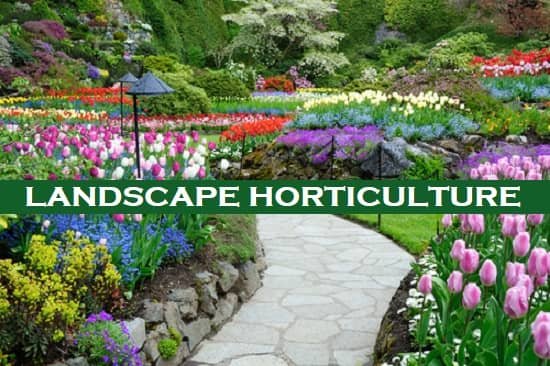Definition and objectives of landscape horticulture are briefly described below-
Definition of landscape horticulture
The branch of horticulture, which deals with the art and knowledge of the development of plantation or ornamental plants by arranging them in such a manner with the existing plants and structures to beautify a place maintain natural scenery, maybe called landscape horticulture.
On the other hand, landscaping may be defined as using plants outdoors to fulfill aesthetic and functional purposes. Thus, the term is identified with the outdoors, even though plants can accomplish similar objectives indoors (sometimes called interiorscaping or landscaping).
Landscaping is an activity in which beauty and function may be determined by the customer.
To one person, landscaping may mean a couple of fruit trees or just plants on the property. To another customer, plants in the landscape must not only be carefully selected but also strategically arranged. A beautiful home or an institution with the well–landscaped ground increases the property’s value and increases the property’s usefulness. In addition, it is a source of pride in the community, visitors, and passersby.
Objectives of landscape horticulture
Specific objectives should be attained or keep in mind to beautify a home and institution effectively by landscaping.
- To enhance the aesthetic appeal of an area.
- To increase the property value.
- To secure attractive ground.
- To blend concrete and architectural creations into the natural scenery.
- To provide privacy by shielding the general public from selected areas. Such as the backgrounds of homes, utility substations, and patios.
- To hide bad conditions in the area. For example, plants can be used to create a wall ground.
- To modify environmental factors.
- To create recreational grounds to provide places for relaxation and community interaction.
- To provide hobby activities for homeowners.
- To improve and conserve natural resources by reducing soil erosion.
- To reduce noise and environmental pollution. For example, plants in the landscape can be used to absorb noise.
